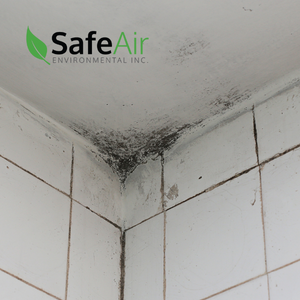When to Test for Mold at Home?
Posted in Mold, on August 03, 2022
Most of SafeAir’s clients come to us for mold testing in Toronto after there are physical or visible signs of mold growth in the home. This is great — a mold test is one of the best ways to determine the scope of a mold infestation. But it’s also too late because by the time you see mold, it’s usually spread beyond its initial infestation and is a much more significant and complex problem to solve. A home air quality test will help you avoid indoor air quality problems like mold by highlighting hidden or hard-to-find new infestations.
Here are three times we think it’s wise to look for mold growth in your home.
Does Your Home Have a Funny Odour?
 Once you know what mold smells like, it’s hard to ignore! Mold has a distinctive musty odour — think of dust or a pile of damp leaves, and you’ll be heading in the right direction. This smell often precedes visual evidence of mold growth, especially when there are infestations growing behind heavy furniture or inside walls. If you smell something strange but can rule out the gym bag, a home air quality test is required.
Once you know what mold smells like, it’s hard to ignore! Mold has a distinctive musty odour — think of dust or a pile of damp leaves, and you’ll be heading in the right direction. This smell often precedes visual evidence of mold growth, especially when there are infestations growing behind heavy furniture or inside walls. If you smell something strange but can rule out the gym bag, a home air quality test is required.
Have You Recently Had a Water Damage Incident?
Water is one of the most challenging aspects of the indoor environment. High humidity can make your home uncomfortable, while leaks, splashes, and floods can damage physical objects and structures and promote mold growth. Most indoor mold species can start growing within 48 hours of contact with moisture, making it extremely important to clean up leaks as soon as possible. One of the best things you can do if you’ve had a flood or storm damage is call the SafeAir team — we can advise you on how to increase airflow and test for mold or other airborne issues caused by water damage.
Have You Seen Mold in Your Home?
Mold itself can look fuzzy, furry, slick, or smooth — but you don’t need to see it to experience the physical symptoms of a mold infestation. Mold growth can cause and be caused by secondary problems such as high humidity or ventilation problems. The interconnected nature of our indoor environments is why indoor air quality testing is so valuable. It can peel back the layers to determine cause and effect, allowing us to work towards a solution. Some common physical symptoms of mold growth that we see include:
- Soft, spongy flooring or walls
- Temperature fluctuations
- High heating and cooling bills
- High humidity
- Stagnant air
How SafeAir Tests for Mold
SafeAir uses science-based testing methodologies to do mold testing in Toronto. That means we may take physical or air samples, complete a visual home inspection, use infrared tests, or test temperature, humidity, and more. To book your indoor air quality test and eliminate mold from your home, reach out to us through the SafeAir website.

